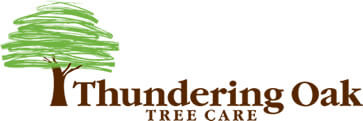Tree Topping Facts
What You Need to Know Before You Consider Topping a Tree
Tree topping is a common practice but very harmful to trees. Tree topping is the clumsy cutting back of the top of a tree to stubs, leaving lateral branches that are not large enough to assume the role of “treetop” or terminus of the tree’s growth. You may hear topping referred to as “tipping,” “heading,” “rounding over,” or “hat-racking.”
Is Tree Topping the Answer to Making An Overly Large Tree Smaller?
The objective of tree topping is usually to reduce the size of a tree. People may feel that their tree has become too large for the location or that a tall tree may be hazardous. Topping, however, is not the answer. Tree topping is a harmful practice that will make a healthy tree more dangerous over time.
If you are concerned about the size, health, or safety of your tree, call a certified arborist for a professional evaluation.
Topping Stresses Trees and Causes a Flurry of Growth
One problem with topping is that it cuts away a significant portion of the tree’s “food factory,” its leaf-bearing crown. This harsh pruning triggers the tree’s natural survival mechanism, and it puts out latent buds, forcing rapid growth of multiple shoots below each cut. The tree needs to grow a new crop of leaves as soon as possible to manufacture the necessary food. If the tree does not have stored energy reserves to survive this threat, it will be seriously weakened and may die.
Tree Topping Makes Trees Vulnerable
The large, open pruning wounds expose the sapwood and heartwood to attack by insects and disease. Some insects are attracted to stressed trees by chemical signals. Lack of sufficient energy reserves will leave the tree unable to chemically “defend” the wounds against these attacks.
Tree Topping Causes Decay
Healthy trees are innately capable of closing the wounds caused by correctly done pruning. The proper place to remove a branch is just beyond the branch collar at the branch’s point of attachment. Cuts farther out on the limb, between lateral branches, leave stubs with open wounds that the tree may not be able to close. Few trees can combat the multiple severe wounds caused by topping. Decay organisms have a free and straightforward path to move into the tree down the branches.
Sunburn??
Yep, topping can do to a tree what we all dread at the beach. The thousands of leaves in a tree’s crown are there to absorb sunlight. Cutting out the leaves as the top is removed suddenly exposes the remaining branches and trunk to the harsh levels of light and heat produced by direct sun. This can sunburn the delicate tissues beneath the bark, leading to bark splitting, cankers, and the death of some affected branches.
Hazardous Growth Spurred by Tree Topping
As a tree tries to survive after a topping, the multiple shoots that develop below each topping cut cost the tree dearly in reserves of strength. Unlike normal branches that form in a “socket” of overlapping wood tissue, these new shoots develop from buds near the surface. As a result, they are anchored only in the outermost layers of the parent branches.
Stubs left from topping usually decay, and the shoots produced below the cut are weakly attached to the tree. As they quickly grow very large, they are likely to break, particularly in windy weather.
Is Tree Topping the Answer to Making An Overly Large Tree Smaller?
Tree topping as an attempt to make a tree safer by reducing its height has the opposite result, making it more hazardous. It is often the case that the tree, while tall, was healthy and presented no hazard before being topped.
Instant and Permanent “Ugly” for the Tree
By removing the ends of the top branches, topping can leave ugly stubs, destroying the tree’s natural form. Without the leaves, the tree appears disfigured and mutilated. As the leaves grow back, it becomes a dense ball of foliage, lacking its former stately grace. A tree that has been topped can never be fully restored to its natural form.
Topping is Expensive
The true cost of tree topping is not just the initial fee paid to the perpetrator.
- Within a few years, if the tree survives, the injured tree will need to be trimmed again, or its new branches will fall victim to storm damage and the resulting cleanup.
- The tree will have to be removed if it dies.
- Another cost frequently ignored is the effect on property value. Healthy, well-maintained trees can add 10% to 20% to the value of a property.
- Trees disfigured by topping are considered a pending expense, which can reduce the property’s value.
- Because topping is an unacceptable pruning practice, any damage caused by branch failure in a topped tree may lead to finding the owner negligent in a court of law.
What Can You Do When You Are Concerned About Your Trees?
Talk with a certified arborist if your trees have over-grown the space available or you are worried that they’re getting “too tall” and possibly unsafe. A certified arborist can determine what steps, if any, are necessary to improve the health, appearance, and safety of your trees.
Contact us today to discuss your trees in Pierce or South King County with a certified arborist.
Tree topping can turn a healthy (safe) tree into a hazard.
